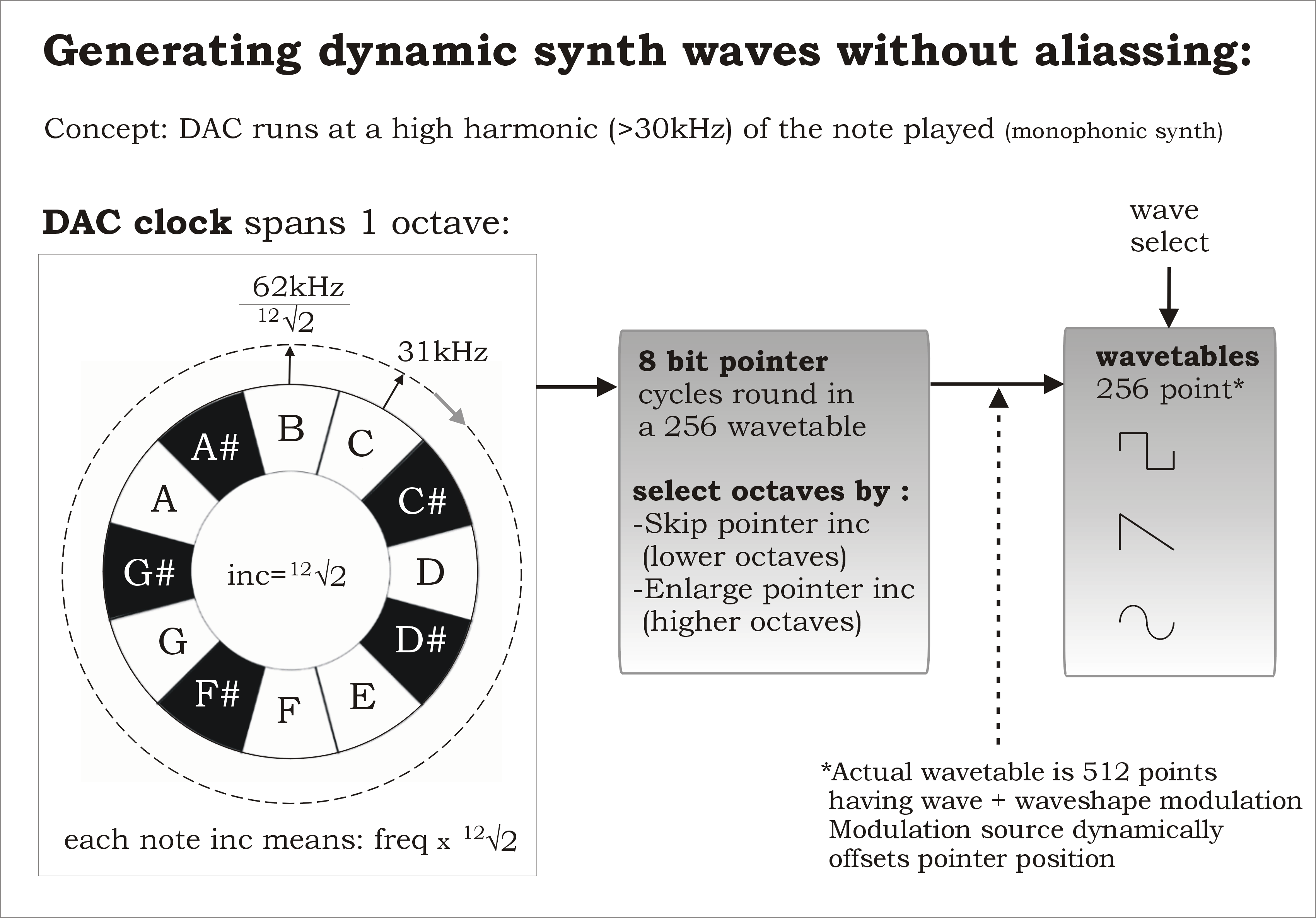SubSub page: Oscillators, digital
Introduction:
In "normal" synths with digital oscillators the waves are produced via a DAC running on a fixed sampling clock.
Playing a full-swing sharp waveform like a sawtooth is then a problem because the harmonics of the note you play "interfere"
(beat) with the sampling clock frequency. This effect is known as aliasing
In my synth designs I use 2 solutions to prevent this completely:
1- I use a different approach that could be called "harmonic sampling".
The sampling clock for the DAC is variable over 1 octave and is always set to an exact harmonic of the note you play.
This way there is no beating (no aliasing):

2- When using a microcontroller (like Arduino) you have build-in hardware square/pulse oscillators for audio.
You can use the on-chip hardware timer/oscillators with direct output pins as audio square wave/pulse generators with classic PWM synth effect.
The software only has to set frequency and pulse width at a relative slow pace (not audio rate)
More text will be added here
